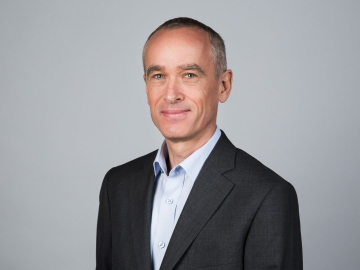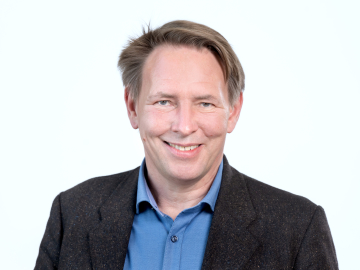Seeing the light

Much of the first phase of the energy transformation is complete. Globally, we have shifted our focus from a firm reliance on coal, nuclear, and natural gas to truly imagining a future fueled by renewable energy sources. In countries such as Germany and Denmark, the first phase of the transformation, characterized by extensive subsidies for and surging private investment in renewables as a niche, has given way to Phase II, where power generation by renewables represented more than 30 and 40 percent of these countries’ energy supply, respectively, in 2017.
Civic power, especially, has become a significant market force, complementing and competing with traditional government and corporate players in the sector. Here, a decentralized energy revolution – one made possible by the liberalization of the energy sector – creates opportunities for new players, new platforms, and new strategies for (literally and figuratively) powering the grid.
Our new book, Decentralised Energy – A Global Game Changer, will be released in autumn by Ubiquity Press London. Along with our co-authors Antony Froggatt, a specialist on energy security at Chatham House (the Royal Institute for International Affairs), and Catherine Mitchell, a professor of energy policy at Exeter University, we examine the two major approaches driving the energy transformation. Our co-authors analyze lead markets in terms of decentralized energy generation from a regulatory (top-down) perspective, whereas our focus is on individual businesses and startups (bottom-up), who are embracing risk and agility and radically changing the energy sector business model. With the emergence of decentralized energy, such as wind, solar, or biomass, as a major source for power generation, renewables are becoming part of an integrated service solution. As our excerpted interviews with energy startup leaders show below, innovation and unconventional ideas are paving the way to new frontiers of our energy systems, both in the industrialized world as well as in developing countries and emerging economies.
Sebastian Groh, SOLshare
Through its peer-to-peer solar energy trading platforms, SOLshare has created a revolutionary approach to affordable solar electricity delivery for consumers in Bangladesh and beyond.
In Bangladesh, there were already lots of people sharing their electricity, for example by going to a neighbor and asking them to charge a phone, or there was someone who did this on a commercial basis and took a certain fee for that. But we also saw people connecting their households with cables to their neighbors and paying per hour of light bulb use. They had to monitor this at all times, though.
Translating these fees into kilowatt hours opened our eyes: From $3.50 up to $10 per kWh is what we economists call the energy-poverty penalty, and what we entrepreneurs call a massive market opportunity. Combining these two insights creates an opportunity in which everybody can win.
People are willing to share and pay for power, and there is excess electricity available. Plus, there are still many households that cannot afford a solar home system, despite the micro-credit schemes. The sharing scheme can be designed to be inclusive enough to make it affordable for them as well, while turning other prosumers into local energy entrepreneurs.
In Bangladesh, there is an extremely high density of these solar home systems. Our idea was to connect these systems and, based on the connections, to increase overall capacity through synergy effects. At the same time, in order to achieve a certain level of diversification, we would tap into the unused 30 percent potential. We started from this idea and called it “swarm” electrification, in which the swarm is more powerful than the individual unit and we would have peerto- peer communication. Each system speaks to the next system. If one system drops out, nothing happens – a fairly resilient model. In contrast to a conventional mini-grid, which has a determined system size, our model can also grow organically.
If we interconnect solar home systems and incrementally add more generation and storage sources, we will have a much better business case because our capital expenditure is limited to the cabling from house to house, as well as to a bidirectional meter, which we call the SOLbox. It essentially works as a net meter. Whenever a household is a net consumer, its balance decreases – not in kilowatt hours but in Taka, the Bangladeshi currency. Whenever a household is a net producer, the balance increases. The balance is directly mirrored on the mobile phone in a mobile money wallet. Then that money can be used in real time for payments of all sorts, not just energy. That is the biggest value proposition for our customers.
Klara Lindner, Mobisol GmbH
From a two-man startup to a company with over 750 employees in just 7 years, Mobisol creates sustainable and affordable renewable energy solutions for impoverished communities. Based on our field research, we knew what the product of the pilot phase should look like: complete all-in-one kits big enough for real appliances (to fulfill willingness to pay), plus credit financed over three years (to ensure the ability to pay). We wanted to include after-sales (to ensure long life), and favored ownership rather than rental solutions (to make sure people take good care of the product). So we designed a first offer that we could test with real customers: We went for three different PV all-in-one systems (60Wp, 120Wp, 200Wp) and a 36-month credit and technical services agreement.
For this, a second hardware prototype was developed, now fully functional. We could remotely turn the PV system on and off based on incoming mobile money payments and we could gather performance and usage data in real-time to foresee maintenance activities through the modem inside the system. We used material from the Tanzanian DIY store for the casing, which was not only cheap but ugly enough so that our pilot phase customers would understand that this really was only a first shot and that we would warmly appreciate their feedback.
With our local partner organization, we created a concept for awareness-creation, marketing, and sales within a few months and started our pilot phase with 100 paying customers in October 2011 close to Arusha, Tanzania.
The product itself was clear now, but the remaining question was how to realize the business model in a viable way. What are the key activities and key resources on our side? What do key partners do? How should we organize the high-quality and cost-efficient installation and maintenance of the PV systems, and distribute these efficiently in rural East Africa?
Our first move was to develop a plugand- play kit that customers could install themselves. In co-creative sessions with real customers, we even managed to draft an accompanying manual. But we came to realize that even though our customers were now able to do the installation themselves, they simply did not want to. “This is like having to put the engine into your new Mercedes- Benz!” said one of our pilot customers. People wanted someone knowledgeable to do the job.
So we decided to bring local village technicians (who until then had been repairing houses, bikes, or phones) into the model. Through a two-week program at the newly created “Mobisol Akademie,” they were trained and certified as Mobisol Installation Technicians. After gaining some experience, the technician could later take another twoweek training course and become a maintenance technician.
The real-time performance and usage indicators from each system fuel an online database, which is our backbone for maintenance. A web-based interface makes it possible to coordinate technical activities in the village in an effective and viable way. With that concept, we not only arrived at a feasible solution for us in the end, but we also made our customers even happier (they know and trust their local technicians more than foreigners) and it created jobs in the village.
Lars Krückeberg, Solarkiosk
Solarkiosk enables the economic development of base-of-the-pyramid (BoP) communities through the provision of clean energy services, quality products, and sustainable solutions.
The idea of providing decentralized energy via a kiosk resulted from the observation that informal markets exist all over sub-Saharan Africa, including areas beyond the grid, and kiosks are a familiar feature even in the most remote regions. We looked at the idea of a kiosk from a purely technical point of view: What type of (not too heavy) building could be manufactured on an industrial scale, such that it could be transported anywhere, erected very easily, and, once erected, produce power in a safe and sustainable manner while requiring low levels of maintenance? You have to imagine it as a “power room” in which other commercial operations are also possible.
We started with the assumption that we have to convince people to come to the kiosk, which means we need traffic. So we have to offer something that people need. Once they have arrived at the kiosk, they realize there is light at night and see that solar power actually works. Meanwhile, we can offer cold drinks, play music, and provide a social space. We opted for fast-moving consumer goods and special products related to hygiene – one pillar of our sales strategy. We had to start becoming retailers as well as experts in marketing and things we never dealt with before. We founded a joint venture with a family in Botswana that operates one of the largest franchise chains in sub-Saharan Africa – real retail professionals. They showed us how retail in Africa is functioning. We sharpened our understanding of how to maintain close ties with our operators. We do not employ them – we would rather create a partnership with them and formulate precise contracts. We would not sell our kiosks because they would be too expensive. However, we would enable local entrepreneurs to start a business with it.
The second range of products relates to solar energy. That is where the impact actually starts! From a pocket lamp to a full-fledged home lighting system, we provide energy solutions for the residents. The third business line for our kiosks is energy services. When the kiosk generates electricity to operate its point of sale – including having the lights, a small computer, and a solar fridge on – the kiosk can sell its excess production to other businesses connected to the kiosk. Alternatively, we can use the excess electricity for entertainment, for example for a TV. The TV can then be transformed into a small cinema, and the operator of the kiosk can charge an entry fee to show football. Wherever a kiosk is established, other businesses emerge too. Now we are learning how a kiosk is a nucleus and trigger for other ventures, such as rental space, a cinema, and internet connectivity.
In those areas, quantum leaps are possible. It is a positive development to provide these people access to goods and information. But it is also a gigantic business opportunity. For that type of infrastructure, a person in charge has to be on site to market and sell this offer. People then also need devices to access the internet, and these devices have to be charged. When spending all these billions in technology, investors expect these services to emerge automatically, but that is not the case. Rather, they have to be initiated by organizations such as Solarkiosk. We are an analog road to market, but we pave the digital road to market.
Excerpted and adapted from “Decentralised Energy – A Global Game Changer,” edited by Christoph Burger and Jens Weinmann of ESMT Berlin and their co-editors Antony Froggatt (Chatham House) and Catherine Mitchell (Exeter University).
To be published in fall 2018 by Ubiquity Press London and available for free download at https://www.ubiquitypress.com.



Antony Froggat
